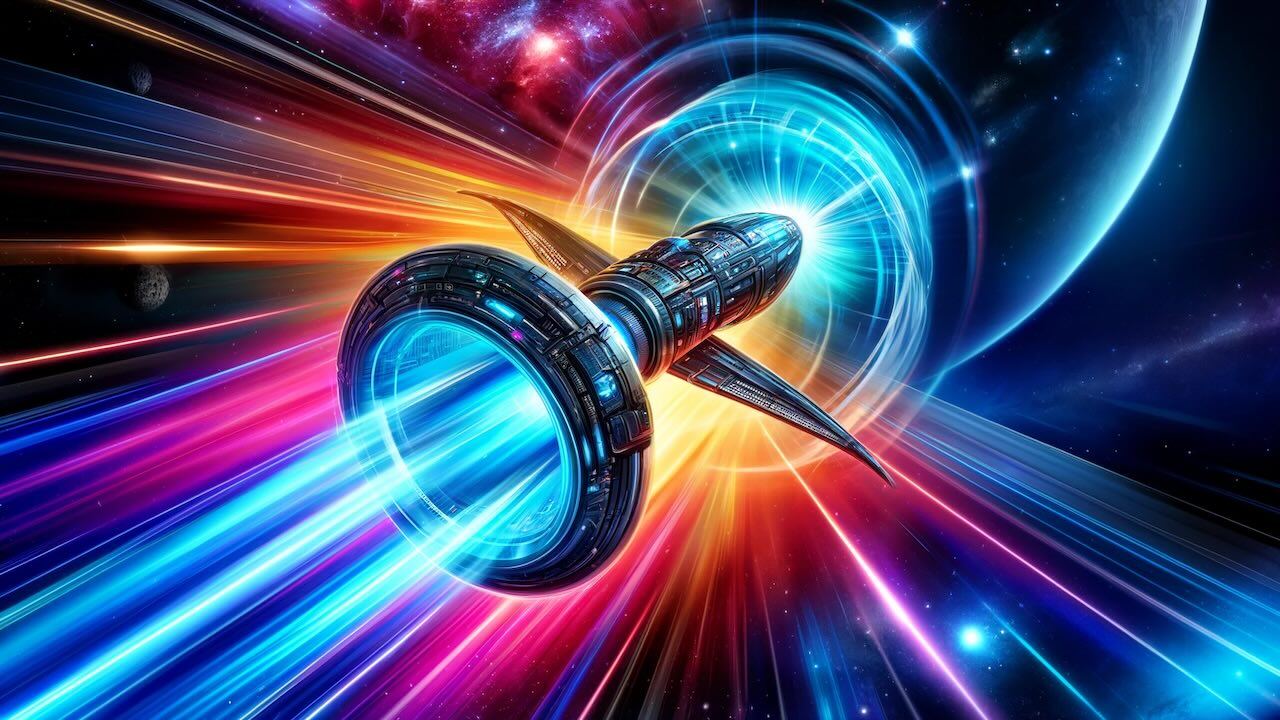
Groundbreaking new research has discovered a means by which a constant velocity warp drive could be possible without the need for exotic particles or negative energy.
Without the fictional idea of a warp drive, the adventures of the Star Trek Enterprise would not have been possible. The warp drive is an essential plot device to the Star Trek franchise, but the dream of making a real one has eluded scientists and, err, physics.
The biggest obstacle to travelling faster than the speed of light is the fact that, well, it isn't possible to travel faster than the speed of light. That's a pretty big obstacle in anyone's book. The number 299,792,458 m/s, which represents the speed of light in a vacuum, is one that cannot be surpassed. No siree.
However, while no theoretical object can travel through space faster than that, what would happen if space was warped around the object instead? In other words, the object or spaceship stays static while space is squeezed past it by contracting it in front of the object, and then expanding it behind it. This was a concept devised by theoretical physicist Miguel Alcubierre in 1994, and it works on the idea that you are effectively shrinking the amount of space to be travelled, thus allowing greater distances to be covered in a much shorter time. Or, rather, the destination is brought closer to the spaceship.
Various proposals have been put forward since then as to how such a propulsion system could be created, often relying on hypothetical particles or 'negative energy'. Or, in simple parlance, stuff that hasn't been discovered yet, and may never be. So, not exactly a great starting point for Elon Musk to get his team working from.
However, thanks to some new research by a group called Applied Physics, it's been discovered that a warp drive using known physics might well be possible after all. The group has called their theoretical drive the constant velocity warp drive.
Rather than relying on undiscovered particles and energy, the new proposal by Applied Physics utilises another force that is known to be able to warp space time: Gravity.
Exploring strange, new worlds, very slowly
Now, this isn't the first proposal of a warp drive by the group. In 2021 it proposed a solution that used a gravitational field. Unfortunately, the idea would have required a vessel the size of a planet to even begin exerting any sort of effect on space-time. And even then you'd probably move through space faster if you were using a clapped out Mini Clubman. Warp factor zero it is, then...
So, what's different about the new research paper? Well, the main aim of the group's latest research was to determine whether it was possible to determine a solution compatible with general relativity for a vessel that would not undergo any acceleration or adverse gravitational forces within it. The solution had to conform to conditions that prevented the need for 'add ons' like exotic energy matter.
Now, while the team did discover a 'clean' solution that stayed within the confines of known physics, there is one significant drawback, and it will surprise absolutely nobody. If somebody, somehow built a warp drive based upon the research, it would still not be possible to transport people faster than light speed. Or, rather it wouldn't be possible to warp space around such a vessel faster than light speed.
That rather inconvenient fact means that it would still take a few hundred years at the very least to arrive somewhere even remotely interesting, although it would be quite useful for doing the space travel equivalent of popping down to the local shop, ie travelling to closer celestial bodies such as Mars, Venus, Saturn and the like. Although, the other great big inconvenient elephant in the room is that the new research doesn't investigate how such a drive would actually create the warping required to make it work. The big issue there is that while a gravitationally based warp drive is theoretically possible without breaking any known norms of known physics, gravity itself is a very weak force. So, we're back to warp factor zero again.
And the point of this was?
Okay, so it might seem like it's all one big downer again. An article about a theoretical warp drive that sounds possible, but in reality will probably never be, or unlikely to be. And, you're probably left thinking "what's the point?" While the new research won't be leading to space cruise ships around the rings of Saturn any time soon, it does represent a step forward towards understanding gravity better. Something that physicists are always keen to improve. What the research does is prove that general relativity allows for the existence of something like a warp drive without the need to resort to fudges such as negative mass or undiscovered particles, when at one time scientists said that such a device could never be possible under the accepted norms of physics. So, it is a notable step forward, even if buying a red shirt for yourself to go and explore a new planet might be a bit premature.
H/T The Debrief
Tags: Technology Science Space


Comments